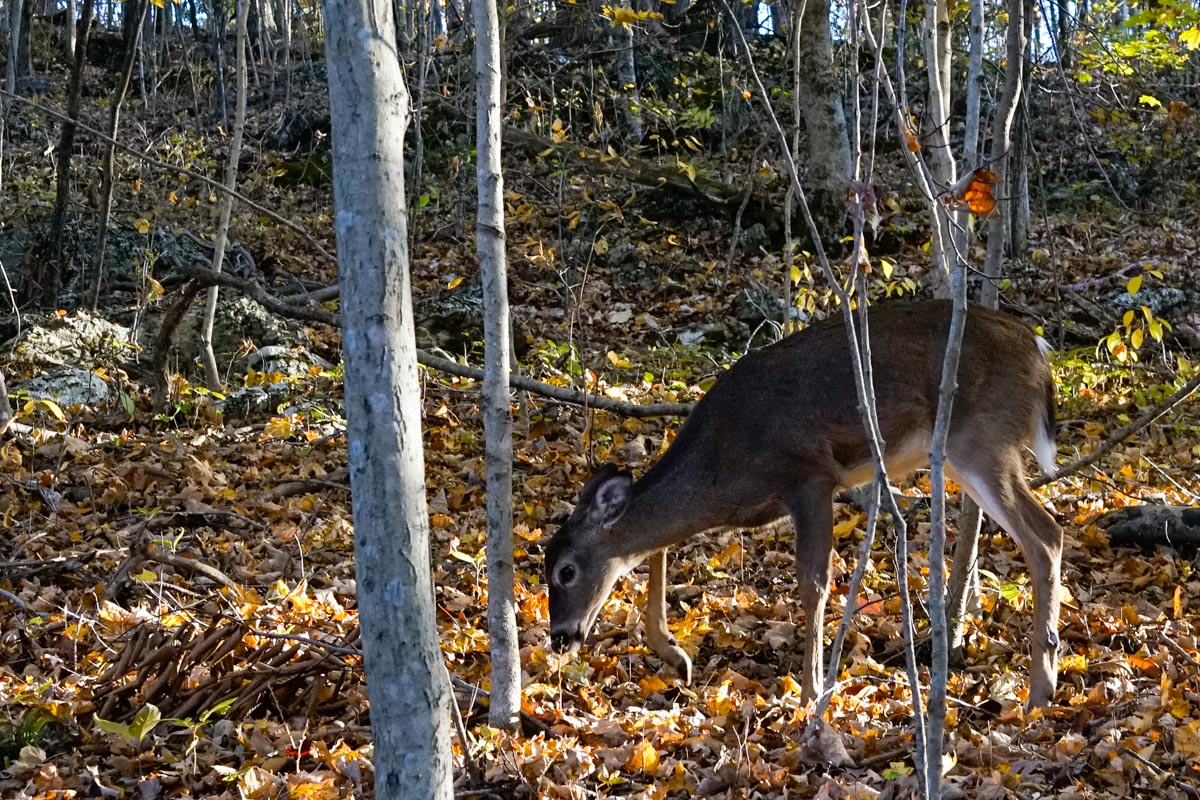My aunt spent much of her life nurturing the gardens of Mohonk Mountain House in the Catskills of New York. She kept lists of plants for various display and wild gardens. Over the years she showed me around the gardens with pride, helping to initiate my own interest in gardening. On one of our many garden rambles, she pulled out a list of plants that she initially viewed as deer proof. At the time I was studying vertebrate dietary preferences, and we talked about the increasing pressure deer were putting on the gardens. She remarked that the list was no longer helpful, since she had seen deer now eat almost every plant, especially in harsh years when food was scarce. They had made updates regularly to the rose garden over the years, finally reluctantly adding a very robust fence.
When I lived in my first house in North Carolina, I remember going on a tour of the land with someone who mentioned that deer had been wiped out east of Asheville in the mid 1930s, with only six left in the entire state. They brought them back by importing deer starting in 1938 and had too much success in the absence of predators. During the time I lived there in the early to mid-1990s, a local wildlife magazine had a map showing North Carolina had the highest deer density in the country, and Chatham County where I lived had the highest in the state. So basically, I was beginning my first garden in the epicenter of deer overabundance. That explains at least some of my early garden failures, or at least gives me a good excuse why so many plants disappeared.
In my woods here in Tennessee almost the entire understory is spicebush. There are literally thousands of them in the forest. This is a plant deer don’t eat, and its abundance is a sure sign of overbrowsing. On the plus side, this makes it a very popular place for the spicebush swallowtail butterfly, which lay their eggs on them, so their caterpillars hatch out to a good meal. In summer my yard is full of butterflies. But it also means that many understory species are locally extinct, often replaced with invasive plants deer don’t browse.
Deer are regular visitors to my yard. As you can see in this photo, they have become quite tame. This was not taken with a telephoto lens, it was literally eight feet away from me, happily eating acorns. This is a problem in the long term for a forest that should be dominated by oaks since with the deer eating the acorns and browsing and often killing the saplings, there are fewer young trees left to become future oaks.
I use my protected yard to grow plants the deer would otherwise eat. Fortunately, at least for now they don’t come into the acre or so of my yard that I intensively garden. They could easily jump the four-foot-high fence if they wanted but seem reluctant, perhaps intimidated by the overconfident swagger of my two shelties.
One of the archetypal plants of southeast forests are trillium, but they are one of the favorite foods of deer. A study in the Great Smoky Mountains found that deer feed on them so aggressively they are unable to recolonize areas. I grow some from seed and have purchased others and have planted hundreds of them representing many species in my yard. I also grow other plants in this sheltered area, including favored deer plants such as native azaleas and dogwoods.
It isn’t possible to fence entire forests, however, and we need to find some acceptable solution for living with deer that allows native forests to thrive. There are now somewhere between 100 and 1000 times more deer than there were 100 years ago. Although reintroducing native predators like wolves and cougars would help provide population balance, this is a very unpopular solution for many and has led to lots of conflicts. In areas where the hunting season is extended, there have been some reductions in deer populations sufficient for natural plant habitats to regenerate, but again this isn’t without controversy. Deer populations have fluctuated dramatically over the centuries as people have shifted land use patterns, but at the moment we are in a period of tremendous habitat destruction from their abundance.
Hopefully we will find a new balance before deer irrevocably cause the extinction of native plants and animals. In the meantime, our gardens can help provide refuges for vanishing species, with the goal that eventually some might be brought back to wild places where deer are a balanced part of the ecosystem. For now, I plant what the deer can’t resist in my garden, removing invasives and adding native plants to the acres beyond in an elaborate experiment. I don’t expect to create a pristine wilderness, but I do what I can to restore a degraded habitat that has unfortunately become the norm in much of America. Every year in our uneasy truce, the forest is better for all species that call it home, including the deer.
